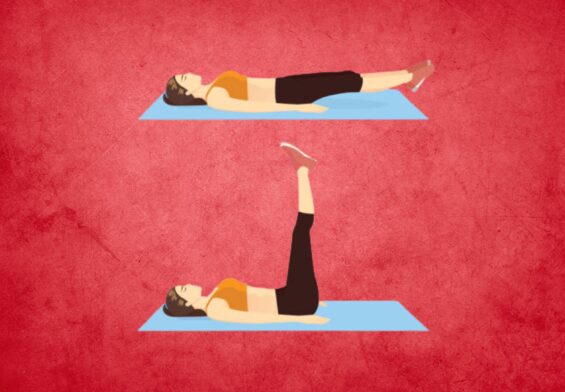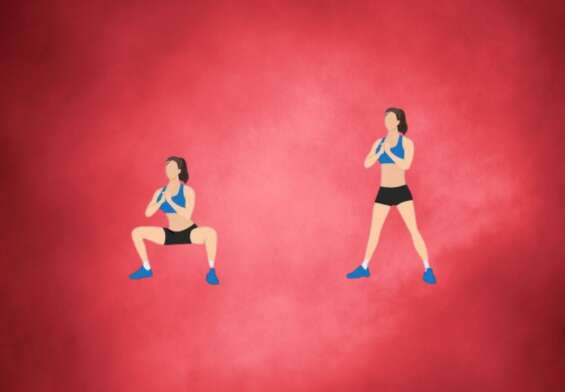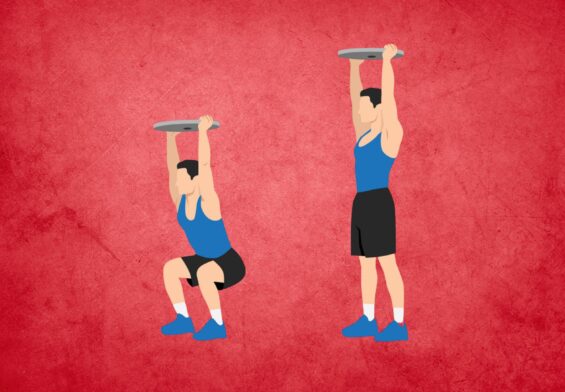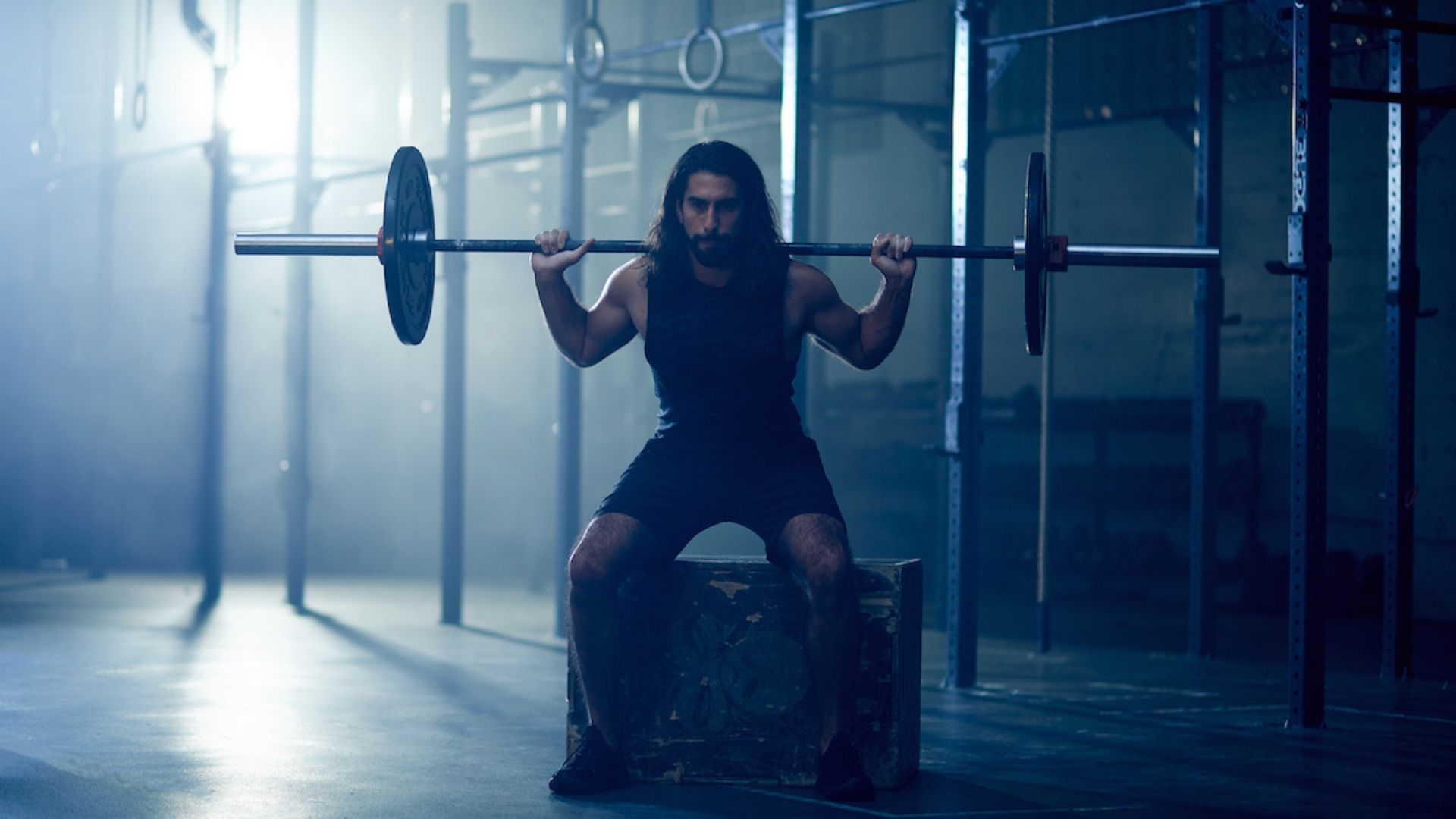
Box Squat: An Effective Variation of the Classic Exercise
This Box Squats guide will teach you how to master this technique and training tips and tricks and what muscles they use.
What Is Box Squats?
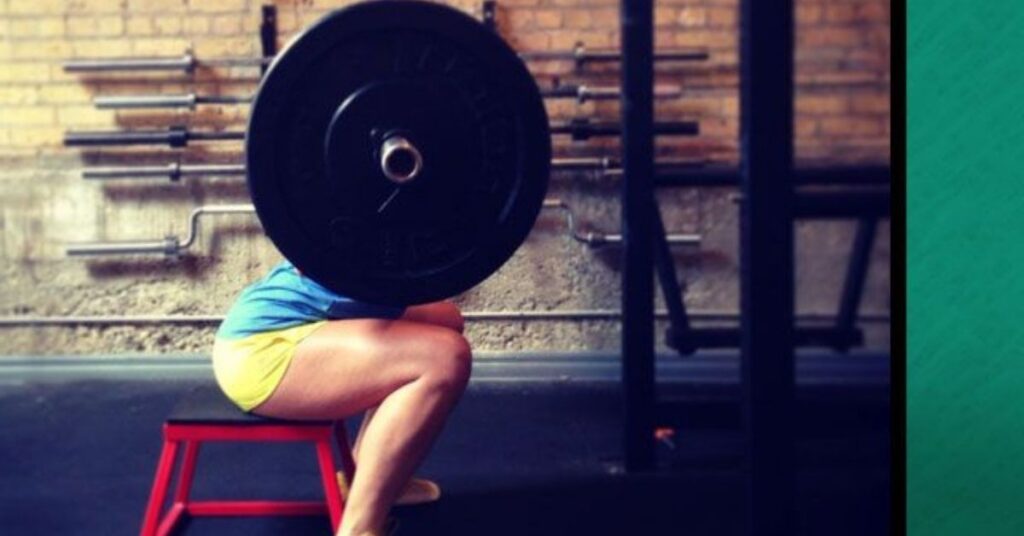
Box Squats is another variation of traditional Squat.
The lifter will squat down on a box and then pause to drive the weight back up.
Both the weight and the method of carrying it are variables.
How To Do A Box Squat With Proper?
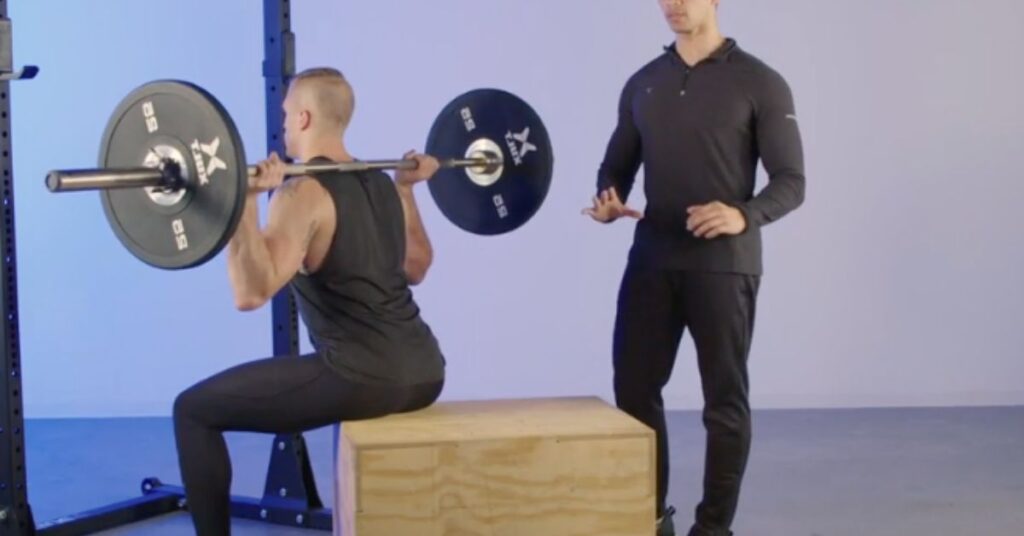
- Approach a barbell in a squat rack at the mid-chest (above your nipple line).
- A box or bench placed at the desired height behind your back should be sufficient.
- When you sit down on the box, your thighs should be parallel to it.
- Place your thumbs around the bar and place your hand on the bar at about shoulder-width
- Place the bar underneath your trapezius muscles.
- Keep your shoulders together, but don’t shrug. This position will be maintained throughout the whole lift.
- To position your feet at shoulder width, stand tall with the weight. A wider stance will help target the posterior muscles group.
- You want to be as close as possible to the box without touching it.
- You have two options: you can either point your toes straight or angle them out between 15-30 degrees. The wider your stance is, the more you’ll need to turn your feet.
- Breathe deeply, brace your abdomen, and start the movement by simultaneously bending your hips and knees.
- As if you were seated behind a chair, flex your hips and cradle your hamstrings. But keep your spine neutral.
- Continue to squat until you’re completely sitting on top of the box.
- CONTROL DESCENT – Don’t slam on the box, as this could cause severe spinal compression
- To allow you to sit comfortably, your glutes and hamstrings should be acting as cushions.
- For one count, sit completely on the box. DO NOT move. You must keep your muscles tight.
- You can have some forward movement in your knees while sitting on the box. However, try to keep your shin angle relatively straight.
- You can reverse the movement by driving upwards from the box while keeping a neutral spine. To extend your hips, squeeze your glutes at the top.
Common Mistakes
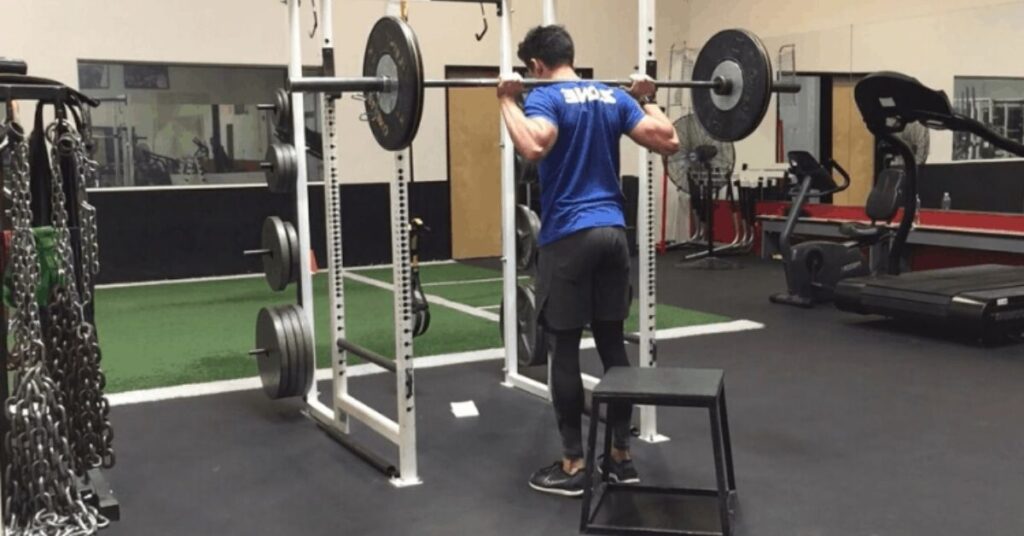
Bouncing From The Box
This is dangerous and defeats all the purposes of the exercise.
For a 1 count, you must sit completely on the box.
This movement should not be practiced with a heavyweight.
Practice technique and control by lowering your weight.
Allowing You To Cave Inward On
Excessive wear to your hips and knees can be caused by allowing your knees downward.
Keep your knees parallel to your toes.
Practice the technique and lose weight.
The Box Squat
Box squats offer four benefits that lifters, competitive or not, can reap.
Increase Concentric Strength
The lifter can take away their momentum by halting on a box at the bottom of a squat.
The lifter must use concentric strength to move the weight.
This will result in a stronger lockout for standard back squats (not larger quads).
Posterior Chain Development
Box squats are performed by a lifter engaging their glutes and their hamstrings.
This will significantly impact non-box squat strength, lower-body strength, and power output.
Sticking Points In Back Squat
Most lifters will encounter sticking points during the various phases of the Squat.
Common areas are located at or slightly above the parallel.
You can adjust the box squat to your needs depending on how you train and develop strength, confidence, and skill.
Train Around Aches
Before squatting, you should consult your doctor if you have an injury or simple pain from overuse.
This move is more accessible for people with lower back pain or achy knees because of the box squat’s pause and reduced range of motion.
Muscles Worked By The Box Squat
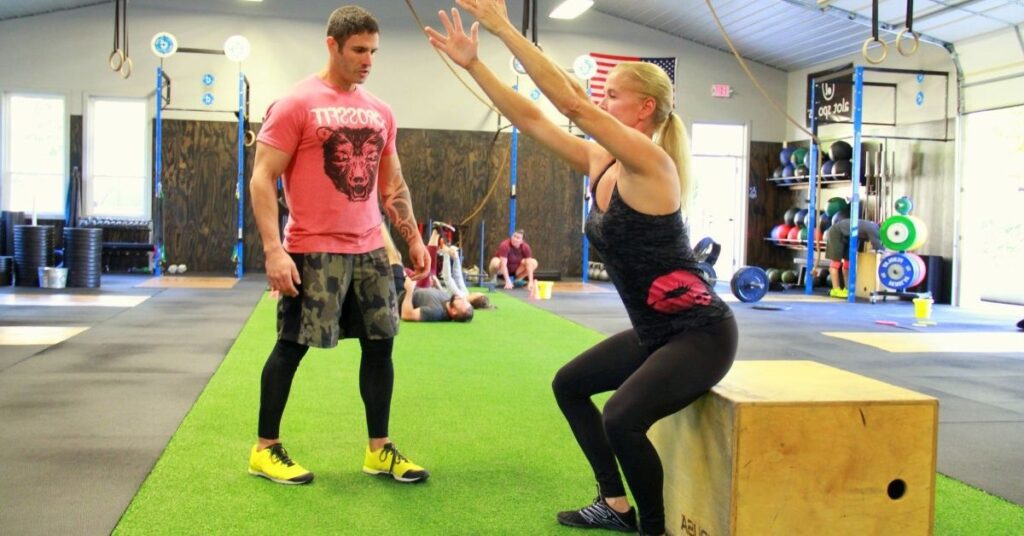
The box squat is a variation and works almost every muscle in your lower back.
These are the major muscles that the back squat works and their functions.
Quadriceps
Quadriceps extend beyond the knee and are therefore engaged during the lifting phase.
Note:
The greater the box, the more restricted your motion will be, which will decrease the quadriceps’ engagement.
Hamstrings And Glutes
Box squat is a box exercise that activates the hamstrings and glutes.
However, depending on the box height and barbell position, their participation may differ.
The bar should be lower than the back.
This will allow for more hip extension and hip flexion, which will increase hamstring engagement and glute engagement.
Who Should Do The Box Squat?
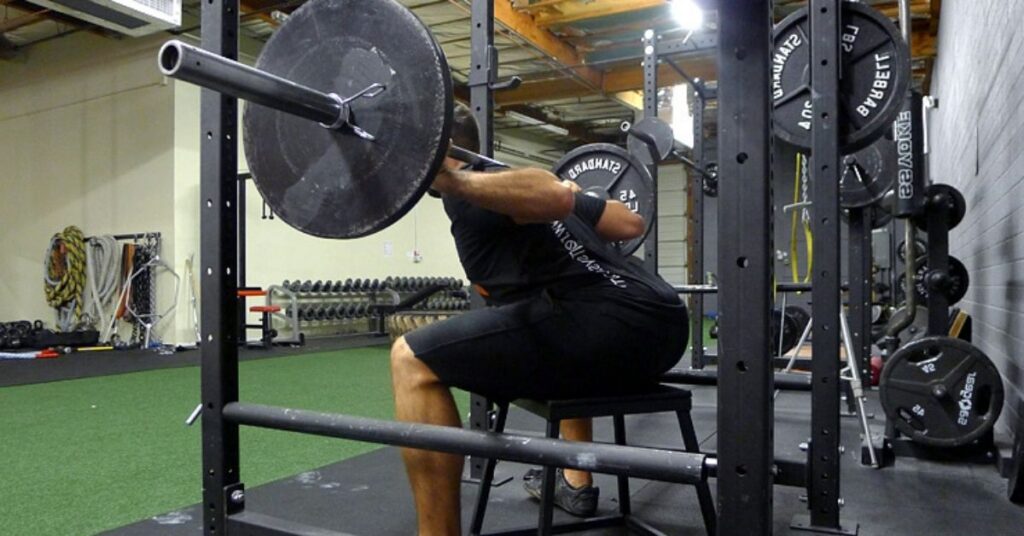
Box squats can be a more focused version of the traditional Squat.
However, general lifters and competitive athletes alike can still benefit from this exercise’s great benefits.
These are the people who should consider moving to a box.
Powerlifters/Strongmen
Powerlifting aims to hoist as much weight as possible.
Progress slows down as one becomes stronger.
Lifters may have issues with certain parts of the lift, such as the bottom, middle and top.
The box squat can be used by powerlifters to strengthen the top or lockout of the Squat.
The box squat is also beneficial for powerlifters and strongmen who can lift heavier weights.
High box squats are especially helpful for strong men.
Weightlifters
Although not entirely useless, box squats aren’t something a weightlifter will do.
Deep, regular squats are better for the snatch or clean and jerk.
General Fitness
Most people would benefit from learning to squat in all ranges of motion.
Box squats are a great way to learn hip drive and load mechanics.
Squat Sets And Reps, Weight Recommendations
These are the three main training goals and programming suggestions for programming the box squat in workouts.
These are only guidelines.
They should not be considered the only way to program the box-squat.
To Gain Muscle
Box squats are a great way to build muscle.
Partially extending your motion range may not be the best way to increase muscle mass in the legs.
Full-range motion squats are better for increasing leg size.
Box squats can be used to increase quadriceps strength.
However, you cannot perform standard back squats.
You should lower your box to achieve a wider range of motion.
You should start with 3-4 sets of 6-10 reps, moderate weight.
Between sets, rest for one minute.
To Gain Strength
Box squats can be used to address any sticking points during a full-range motion squat.
Due to the limited range of motion, you can use more weight with box squats than with back squats.
You will need to program the box squat like any strength-specific movement.
This should take you to two to five reps at 80-90% for three to five sets.
Between sets, rest for two minutes.
To Increase Muscle Endurance
Box squats can be integrated to improve muscle endurance.
This is useful for athletes who might need it for specific sports or other activities.
Perform Two To Three Sets With 15-20 Reps Each, Using Light To Moderate Load.
Take a minute to rest between sets.
How To Add Box Squats To Your Workout?

Box squats are included in your exercise will determine how to incorporate them.
Beginner
Do not attempt to squat weight if you have never done so before.
We suggest doing 12-16 reps at once.
Intermediate
You can grab a kettlebell to do 5 sets of 8 goblet box squats.
Advanced
If you want to lift more weight, we recommend doing five sets of three to five reps.
You should also ensure that you get at least 1 to 2 minutes of rest between sets to allow your body to recharge.
Box Squat Variations
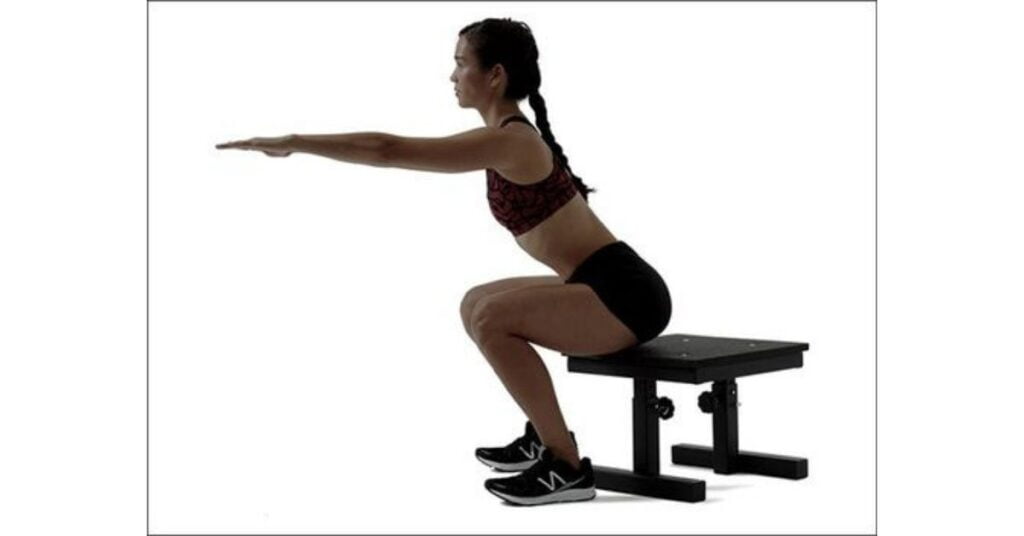
These are three variations of box squat that can be progressed or regressed depending on the lifter’s goals and needs.
Pause Box Squat
The pause box sit is the same as the regular box squat.
The lifter takes a deliberate pause.
The lifter must maintain braced and loaded hips and quads during this pause.
Pausing can reduce the stretch reflex and help you develop concentric strength.
Low Box Squat
It is possible to train the box squat only, but it can be difficult to achieve maximal muscle growth and a full range of motion.
You can transform lifters who have difficulty reaching stable low positions into full-range-of motion squatters by gradually lowering the box height.
Box Squat With Accommodating Resistance
You can add the benefits of accommodating resistance by adding resistance bands or chains to a box squat.
This will allow you to build strength and power.
You can improve strength by adding accommodating resistance and increasing power output.
Box Squat Alternatives: 5 Exercises
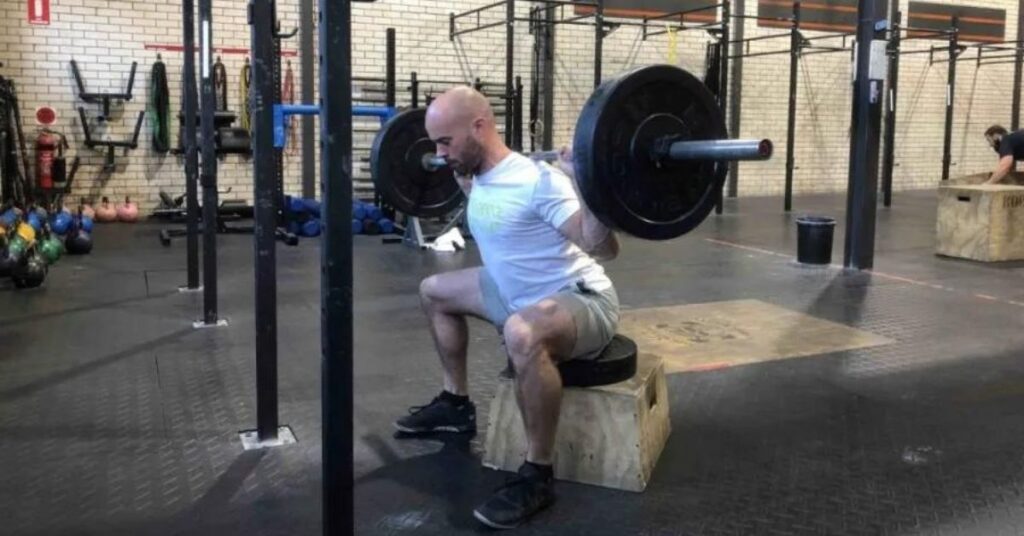
#1 Anderson Squat
Anderson Squat is a back squat variation.
It requires the lifter to start each lift with a concentric movement rather than an eccentric one.
It is a good alternative to the box-squat because it emphasizes concentric strength.
It can also be used to increase explosive strength.
This is your body’s ability to quickly produce a muscle contraction.
You do this by stopping the barbell at a dead stop after each rep.
Next, push the barbell as hard as you can to get it off the pins.
How To Do
The safety pins on the power rack should be set at the bottom.
You should aim to keep the bar as low as possible but not so high that it is impossible to reach the top.
Keep your normal squatting position below the bar.
Tension can be created by grasping the bar and flexing your abs.
Start the ascent from a standing position by lifting your core vertically and maintaining a tight core.
After you have extended your arm fully, lower the barbell back to the starting position.
Pro tip
The Anderson squat has a key function: it improves the squat technique.
To ensure this, focus on keeping the bar path straight above your center of feet, so you’re going straight up/down.
#2 Partial Squat
Partial squats stimulate the glutes and allow lifters to overload the weight more effectively than in a regular squat.
They are also great for getting past sticking points in the Squat.
Because you are always in the upper half of your squat range, the loading requirement in partial squats is always higher on the hip extensors.
This range of motion allows athletes to build confidence when lifting heavy weights they would normally not lift in full motion.
How To Do
As you would for a normal back squat, set up.
Standing shoulder-width apart, place your feet.
Toes in towards the squat position, pointing at your hips.
Once you have reached your desired range of motion (which will depend on your sticking point – typically halfway between parallel and standing), then you can stop moving.
Continue to drive upwards, back to the starting position
Pro Tip
The safety catches should be placed at the bottom of the desired range of motion.
When you lower your barbell into a squat position, the safety catches will be at the bottom of every partial rep.
Be careful not to rest the bar on the safety catches or bounce off them.
These safety catches are important because the Anderson squat will allow you to lift heavier loads than the box or back Squat.
#3 Hatfield Squat
The Hatfield Squat is more mobile and requires less coordination than a standard squat.
It can be used as a regression exercise for back squats and box squats.
This allows lifters to improve their squat technique and help them through sticking points.
It activates quads more than the box squat because you are expected to do a full squat lower than the typical box height.
How To Do
Set up a power rack, squat stand, or squat stand as you would for a safety-bar squat.
Stand up and grab onto your hand supports to remove the safety bar.
These could be the band pegs or extra barbells or even the uprights.
Begin by lowering into a squat position.
Hinging and hips should be emphasized.
Once you have reached your desired depth, push off the floor and start your ascent.
Pro Tip
In the descent phase, aim to deliberately push the knees forward while remaining vertical.
This will activate your quads more effectively throughout the movement.
If your heels are not flat, you can raise your heels and squat on plates.
#4 Pause Squat
A pause-squat may be an option if the equipment is an issue.
The pause at your bottom replicates the box squat pause, but without the box.
The pause squat, which is not box-shaped, is more difficult than a box squat because the muscles are constantly stretched.
However, it does support concentric strength development in the quads and quads because it eliminates the effect of momentum aid on an upwards drive.
It reproduces all the benefits of the box squat in every aspect.
How To Do
As you would for a regular back squat, set up.
Standing with your feet shoulder-width apart, place your hands on the floor.
Lowering into a squat position, Hinging at the hips
Once you have reached your desired range of motion (i.e., You should reach the box at the same height.
Then, pause and hold it for 2 seconds.
Do not sink lower than your hips.
You can return to standing by driving straight up from the pause position using as much power and acceleration as you can.
Pro Tip
Do not slow down when you are in the pause.
You should maintain the same pace as a normal back squat but not slow down.
It is a skill that requires advanced bar control to stop and maintain the tempo during a squat.
This will increase the benefits of a pause.
#5 Goblet Squat
The goblet-squat, a beginner-friendly squat variation, is an excellent alternative to the box squat.
It holds you in a standing position.
How To Do
With a kettlebell in each hand, stand with your feet shoulder-width apart with your toes pointed outwards.
Keep the weight on your chest and engage your core.
Now, look straight ahead. Lower your hips to the squat position.
After you reach the limit of your mobility, get back to standing by pushing your heels forward and driving through your heels.
Pro Tip
Keep the kettlebell close to your chest to prevent your arms and biceps from working.
The focus is on the leg muscles, which activate the desired muscles and lift more weight than the arms.
Are Box-Squats Bad To My Knees?
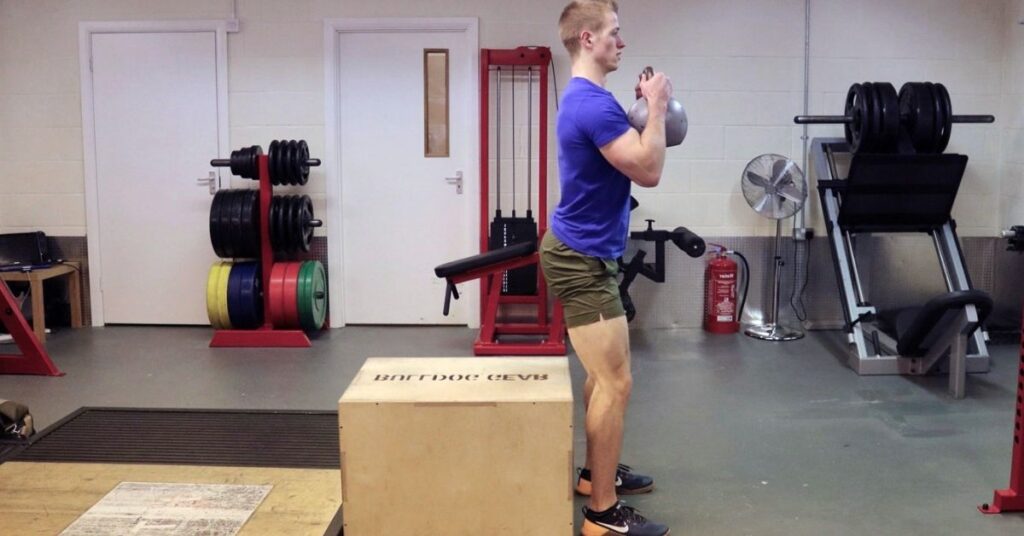
No.
If you have a knee injury, squats are safe for your knees.
Exercising too often can cause problems.
This is because the motion training does not address the entire range of motion to prevent pain, stabilize the joints, and develop the muscles.
Can I Squat To My Full Depth?
If you want to lose weight, build muscle, and improve your conditioning are good options.
Suppose you are a strength athlete and need to squat strength in a limited or partial range of motion (powerlifting).
In that case, using the box squat at different times can improve your performance.
At What Height Should I Box My Squat?
The depth can vary depending on the outcome, but it is usually too parallel or slightly lower than parallel.
Some athletes may increase their jump height by squatting to 60-70 degrees of knee flexion to mimic jumping mechanics.
To address sticking points, it is possible to set your height below the sticking point to reaching that difficult range.
Maximizing leg growth (muscular development) is your goal, so it’s best to do squats with the maximum range of motion.
Box squats are not applicable in this scenario.
What Is A Box Squat For?
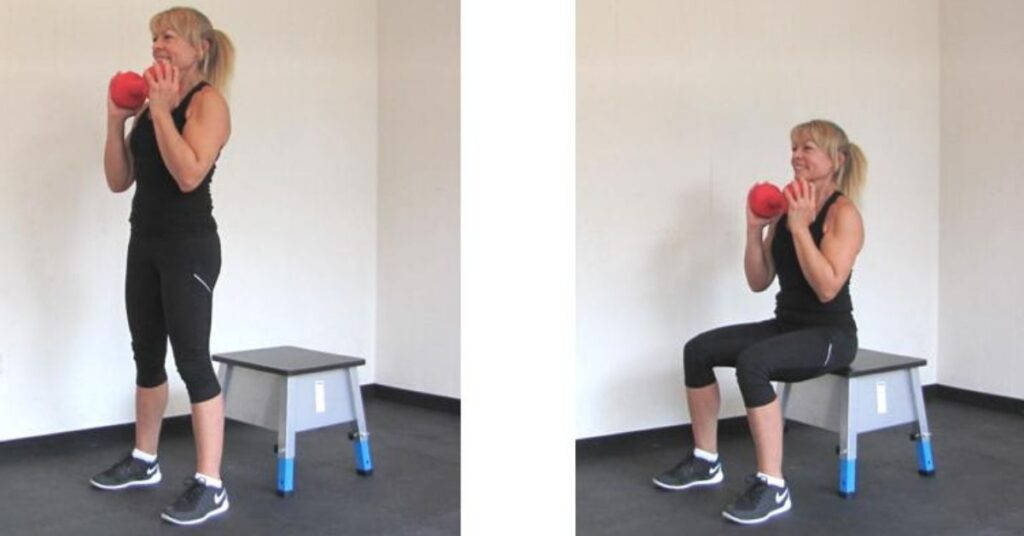
Box squat is simply another variation of Squat you can use for training the knee flexion movement.
It is more explosive than regular squats and emphasizes the muscles of the posterior chain.
Do you think it is necessary?
No.
It does offer a different stimulus and can add variety to your training.
Do Box Squats Improve Squats?
Yes, there is a crossover between box squats and traditional back squats.
They are two different movement patterns.
You might need to train only the box squat.
It may take a few weeks before you feel comfortable doing a back squat.
The movement has different mechanics.
Box Squats Easier Than Squats?

Box squats can be more challenging than regular squats because you must stop the movement at the bottom.
To help you get up from the bottom, you can use the “bounce,” also known as the stretch reflex, when you do regular squats.
You will lose momentum when you do the box squat, so plan to reduce your weight.
This is an example of a direct comparison.
Box Squats Vs. Regular Squats
Box Squat
- This allows you to build explosive power and strength by training from a dead stop motion.
- You can adjust the depth of your Squat and your range of motion. This allows you to know exactly how low you’re going.
- You can overload your glutes, hamstrings, and quadriceps by using less knee flexion.
Regular Back Squat
- This allows you to lift more weight because you can use the stretch reflex (bounce) at the bottom
- Quadriceps is more used than glutes or hamstrings, which results in greater knee flexion
- It is more difficult to determine your squat depth
Do Boxsquats Build Glutes?
Box squats are a great exercise to build the glutes and the entire posterior chain.
These include the lower back muscles and the hip extensors.
You want to overload your posterior muscles, so keep your shin vertical at the bottom.
Can You Do Box Squats With Dumbbells?

Box squats can also be done with dumbbells.
You have two options: hold the dumbbells with your outstretched hand, over your shoulders, or just one dumbbell at your chest, like a goblet-squat.
Box Squats Are Good For Beginners.
They are an excellent exercise for beginners as they reinforce good lifting techniques and movements for the Squat.
Last Words
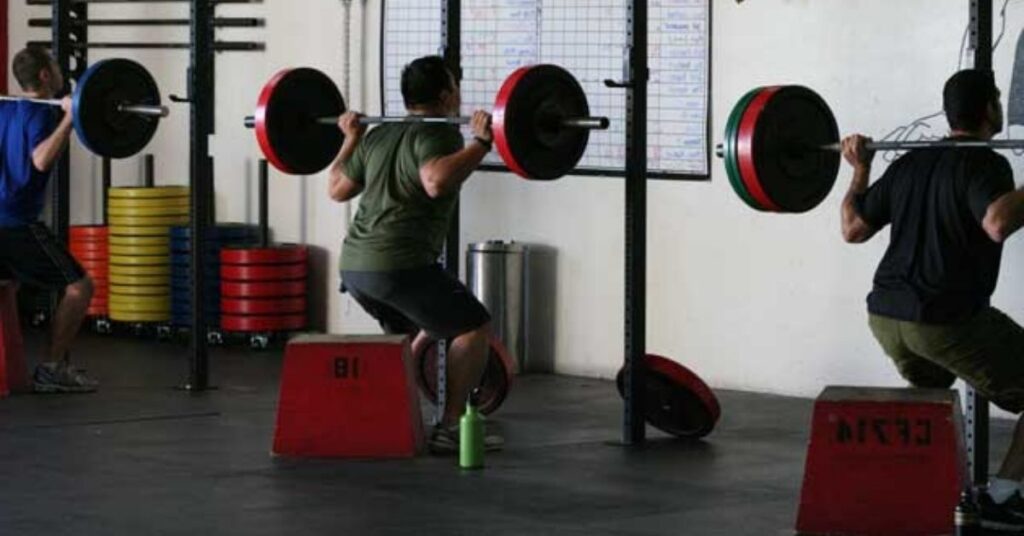
Box squat alternatives will activate quads and target posterior chain muscles.
They also support athletes who are struggling with traditional squats.
A squat box alternative that increases concentric strength is also an option.
Whatever you decide, these options offer variety and benefits for your lifting program if box squats aren’t enough.





